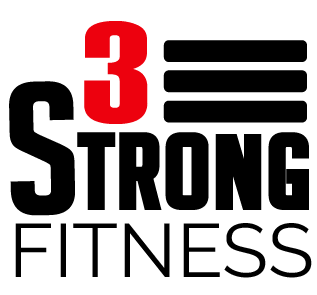Everyone has at least one fitness goal that they try to reach over a few months to a year. Maybe it’s something generalized, like finding the time to run or jog every day, or joining more group fitness classes. Or it could be something ambiguous, like being able to fit into a favorite pair of jeans again or dropping two shirt sizes.
There’s nothing inherently wrong with such goals, because they’re still something one can strive for.
But what happens after you finally fit into your favorite pair of jeans again? What’s the next step after consecutively joining three group fitness classes a week instead of just the one? Is it possible for people to not just reach their fitness goals, but go beyond them?
Definitely yes. Unfortunately, some people find they can’t even accomplish what they set out to do. Others find themselves going back to old habits pretty quickly after reaching their goal.
That doesn’t mean it’s pointless to try, though. It just means you need to create meaningful, challenging, and – most of all – attainable fitness goals for yourself. But how do you go about doing that?
Here are a few guidelines to remember.
Be Specific
Simply wanting to lose weight or else get into better shape can actually be broken down into dozens of smaller habits. Losing weight, for example, means changing the way that you eat, the way that you shop, the way that you cook, and what you order at a restaurant when you go out.
Each step towards your goal is actually a series of habits or behaviors that need to be changed.
So don’t make your goals too vague. Losing weight and getting into shape are great ideas, but they’re too general. Think about how much weight you’d like to lose, for example, or how many inches you need to trim from your waist.
Focusing on a specific goal makes it easier for you to change the habit or habits associated with it, therefore making it easier for you to reach said goal.
Find the Meaning Behind It
 A great way to get to the heart of any goal is to ask yourself why you want it. Why do I want to join more group fitness classes? Why do I want to lose weight? Why do I want to run a marathon?
A great way to get to the heart of any goal is to ask yourself why you want it. Why do I want to join more group fitness classes? Why do I want to lose weight? Why do I want to run a marathon?
Don’t stop at the answer to the first question, though. Keep questioning those answers until you’ve stripped your goal down to something that’s at the core of your reason to change. For example, a weight loss goal might really be a desire to earn the respect of your friends and family.
Be Realistic
Can you actually do whatever you’re aiming to do? Are you willing to do what it takes to achieve that goal?
If you answered ‘no’ to either question, then you need to refine your goal.
Also, it’s a good idea to ask yourself if it’s a good time to make a change, because the timing of your fitness goal might make it harder for you to achieve.
For example, it might be unreasonable to expect yourself to lose a certain amount of weight right before the holidays, or while you’re preparing for a trip. Trying to reach a goal when you’re facing more challenges than usual isn’t the best way to go about it.
However, refining that goal so it’s more realistic can help. Remember, too, that you should be happy with being better, rather than being perfect.
For instance, wanting to maintain your weight even while preparing for a short vacation is too vague, and if you can’t work out one day, you might be frustrated with yourself and think you’ve set yourself an unrealistic goal.
However, telling yourself, “I want to maintain my weight by joining two group fitness classes a week and walking for 10 minutes a day,” makes the goal both realistic and specific. You’re not forcing yourself to hit the gym more than you might be able to, walking 10 minutes a day is easily attainable.
If you’re a beginner, here are some workout plans which might work for you!
Make it Measurable
There’s a saying that goes, “You can’t manage what you don’t measure,” and the same goes for fitness. How will you know you’re improving? A goal is just an aspiration for change, and if you want to change, you need to figure out where you are and where you want to be. You need to be able to measure that so you can tell whether you’re improving or not.
If your goal is to lose weight, don’t just keep hitting the gym and joining every group fitness class that catches your eye. Get on that scale and see how much you weigh, week after week. If you want to get stronger in a particular exercise, you can track the weight lifted or reps completed. All in all, tracking your progress is the simplest way to let you know what you can do, how you’ve done it, and how much more you need to do to reach your goal.

